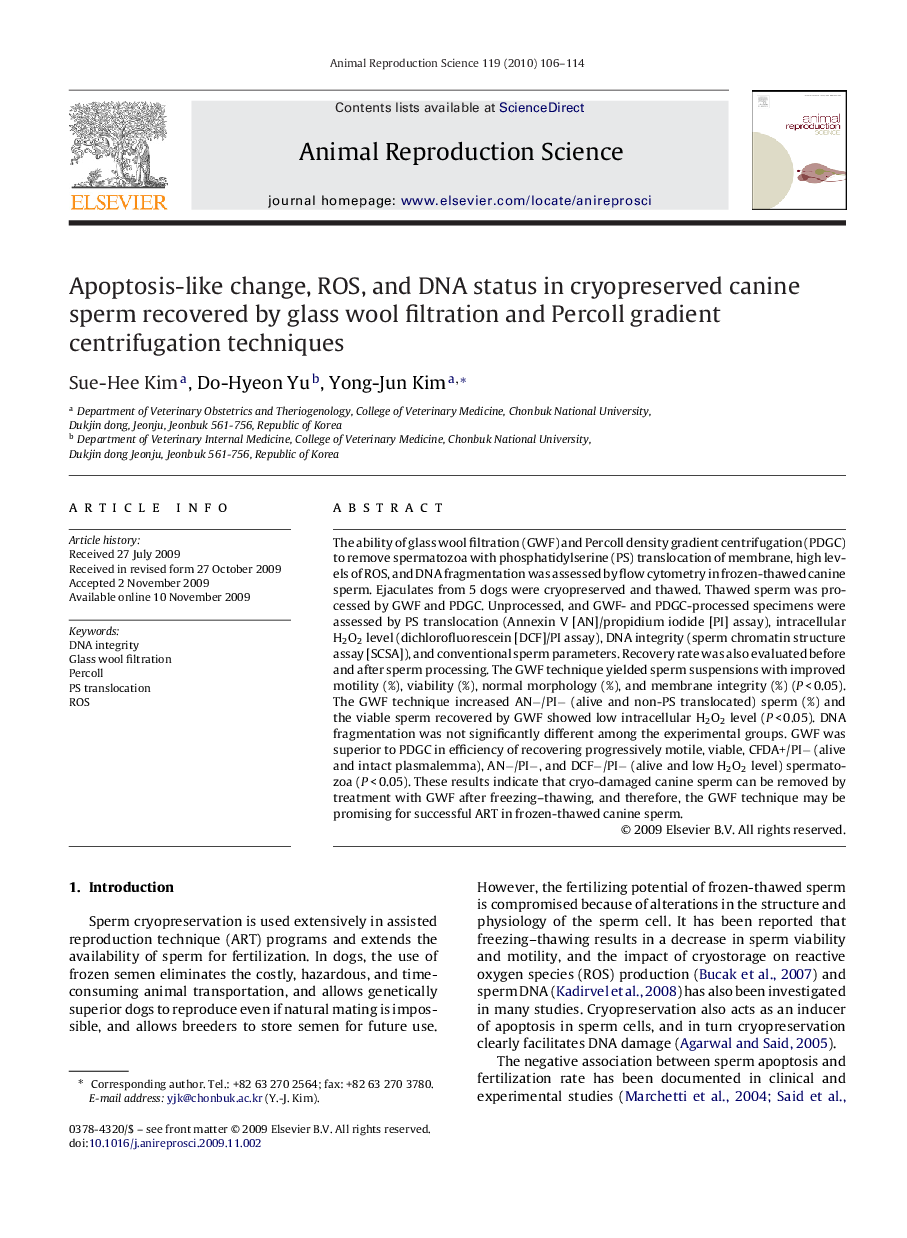| Article ID | Journal | Published Year | Pages | File Type |
|---|---|---|---|---|
| 2073836 | Animal Reproduction Science | 2010 | 9 Pages |
The ability of glass wool filtration (GWF) and Percoll density gradient centrifugation (PDGC) to remove spermatozoa with phosphatidylserine (PS) translocation of membrane, high levels of ROS, and DNA fragmentation was assessed by flow cytometry in frozen-thawed canine sperm. Ejaculates from 5 dogs were cryopreserved and thawed. Thawed sperm was processed by GWF and PDGC. Unprocessed, and GWF- and PDGC-processed specimens were assessed by PS translocation (Annexin V [AN]/propidium iodide [PI] assay), intracellular H2O2 level (dichlorofluorescein [DCF]/PI assay), DNA integrity (sperm chromatin structure assay [SCSA]), and conventional sperm parameters. Recovery rate was also evaluated before and after sperm processing. The GWF technique yielded sperm suspensions with improved motility (%), viability (%), normal morphology (%), and membrane integrity (%) (P < 0.05). The GWF technique increased AN−/PI− (alive and non-PS translocated) sperm (%) and the viable sperm recovered by GWF showed low intracellular H2O2 level (P < 0.05). DNA fragmentation was not significantly different among the experimental groups. GWF was superior to PDGC in efficiency of recovering progressively motile, viable, CFDA+/PI− (alive and intact plasmalemma), AN−/PI−, and DCF−/PI− (alive and low H2O2 level) spermatozoa (P < 0.05). These results indicate that cryo-damaged canine sperm can be removed by treatment with GWF after freezing–thawing, and therefore, the GWF technique may be promising for successful ART in frozen-thawed canine sperm.
